Enhancing Taiwan’s role as “a regional security partner” and promoting global supply chain resilience are among the top priorities of the American Institute in Taiwan (AIT) in the second year of US President Joe Biden’s presidency, AIT Director Sandra Oudkirk said on Wednesday evening.
Speaking at the annual Hsieh Nien Fan (謝年飯) banquet hosted by the American Chamber of Commerce in Taiwan, Oudkirk said that the US-China relationship is facing challenges in areas such as trade and human rights, while the US is also concerned about Beijing’s ties with Moscow, especially after Russia’s invasion of Ukraine.
In the Indo-Pacific region, China’s aggressive behavior is especially obvious in Taiwan, where Beijing continues to exert military, diplomatic and economic pressure, she said.
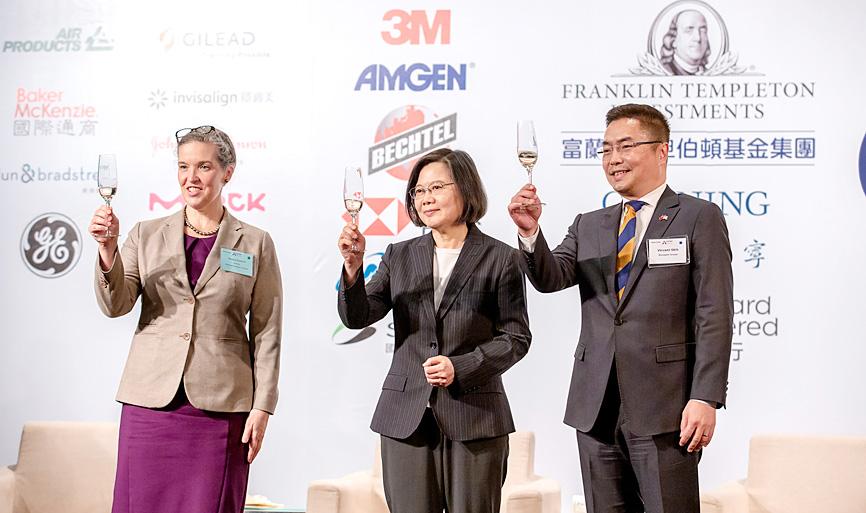
Photo: CNA
China continues to “choke Taiwan’s international space, pressure its friends and interfere in Taiwan’s democratic system,” which poses a threat to all democratic countries, she said.
China’s provocative military activities near Taiwan are disrupting stability and peace in the region, she added.
To counter China’s actions, the US would continue “standing with allies and partners to advance our shared prosperity, security and values in the region,” which is at the core of Biden’s foreign policy, Oudkirk said before discussing the AIT’s objectives.
First, the US would continue to assist Taiwan in enhancing its defensive capabilities to improve “Taiwan’s role as a regional security partner,” as stability across the Taiwan Strait is key to regional peace and in the US’ interests, she said.
The US is “deeply concerned by ongoing PRC [People’s Republic of China] efforts to undermine that stability,” she added.
Second, the US would work with Taiwan to bolster global supply chain resilience through a series of initiatives, as Taiwan is at the center of the semiconductor supply chain, and a pioneer in 5G technology and artificial intelligence, Oudkirk said.
Taiwan would play a crucial role in the recovery of supply chains affected by the COVID-19 pandemic, she added.
The US is to use the Technology Trade and Investment Collaboration framework to encourage investment in semiconductors, electric vehicles, cybersecurity, renewable energy and energy storage from both sides, she said.
The AIT this summer is to form trade delegations to visit the US to discuss the framework, which would help “build scalable eco-systems and enhance collaboration between and among companies, research institutions and innovation centers,” she added.
Third, the US would keep “supporting efforts to preserve and expand Taiwan’s international space,” offering more opportunities for Taiwan to share its expertise at multilateral forums and interact with international partners, she said.
The institute would also strive to deepen “economic and people-to-people ties” between the US and Taiwan in high-tech fields and beyond, she said.
Taiwan was the sixth-largest consumer of US agricultural products and the US’ eighth-largest trade partner in goods last year, with per capita trade only behind Canada and Mexico, she said.
Last year, the US and Taiwan relaunched Trade and Investment Framework Agreement talks and held the second Economic Prosperity Partnership Dialogue, which would promote economic cooperation between the nations and help “build a coalition to counter the PRC’s unfair economic and investment policies,” she added.
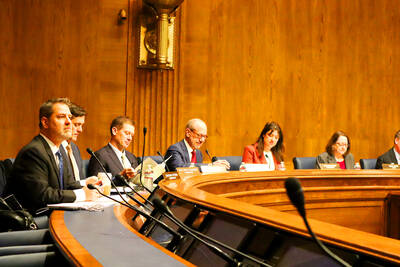
LIMITS: While China increases military pressure on Taiwan and expands its use of cognitive warfare, it is unwilling to target tech supply chains, the report said US and Taiwan military officials have warned that the Chinese People’s Liberation Army (PLA) could implement a blockade within “a matter of hours” and need only “minimal conversion time” prior to an attack on Taiwan, a report released on Tuesday by the US Senate’s China Economic and Security Review Commission said. “While there is no indication that China is planning an imminent attack, the United States and its allies and partners can no longer assume that a Taiwan contingency is a distant possibility for which they would have ample time to prepare,” it said. The commission made the comments in its annual
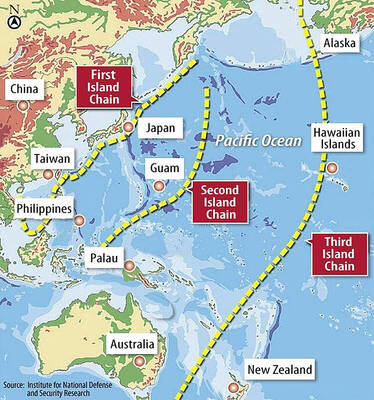
DETERMINATION: Beijing’s actions toward Tokyo have drawn international attention, but would likely bolster regional coordination and defense networks, the report said Japanese Prime Minister Sanae Takaichi’s administration is likely to prioritize security reforms and deterrence in the face of recent “hybrid” threats from China, the National Security Bureau (NSB) said. The bureau made the assessment in a written report to the Legislative Yuan ahead of an oral report and questions-and-answers session at the legislature’s Foreign Affairs and National Defense Committee tomorrow. The key points of Japan’s security reforms would be to reinforce security cooperation with the US, including enhancing defense deployment in the first island chain, pushing forward the integrated command and operations of the Japan Self-Defense Forces and US Forces Japan, as
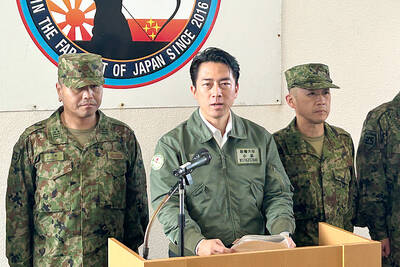
IN THE NATIONAL INTEREST: Deputy Minister of Foreign Affairs Francois Wu said the strengthening of military facilities would help to maintain security in the Taiwan Strait Japanese Minister of Defense Shinjiro Koizumi, visiting a military base close to Taiwan, said plans to deploy missiles to the post would move forward as tensions smolder between Tokyo and Beijing. “The deployment can help lower the chance of an armed attack on our country,” Koizumi told reporters on Sunday as he wrapped up his first trip to the base on the southern Japanese island of Yonaguni. “The view that it will heighten regional tensions is not accurate.” Former Japanese minister of defense Gen Nakatani in January said that Tokyo wanted to base Type 03 Chu-SAM missiles on Yonaguni, but little progress
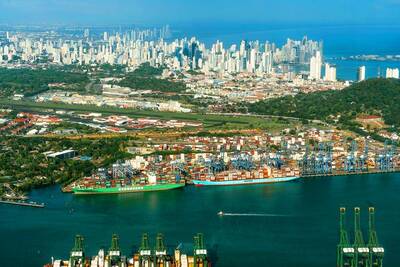
IN THE MIDDLE: Some of the lawmakers defended the trip as an opportunity for investment, cooperation and to see models that could help modernize Panama A planned trip by some Panamanian lawmakers to Taiwan has unleashed the latest diplomatic spat with China as the Central American country tries to navigate the turbulent waters between the Asian superpower and the US. The Panamanian Ministry of Foreign Affairs and the US ambassador to the country on Wednesday criticized China’s diplomats in Panama for asking the lawmakers to cancel their trip to Taiwan, with the ministry accusing the Chinese embassy of “meddling” in its internal affairs. That followed comments from Panamanian President Jose Raul Mulino a week earlier saying that the planned Taiwan trip did not have the approval of